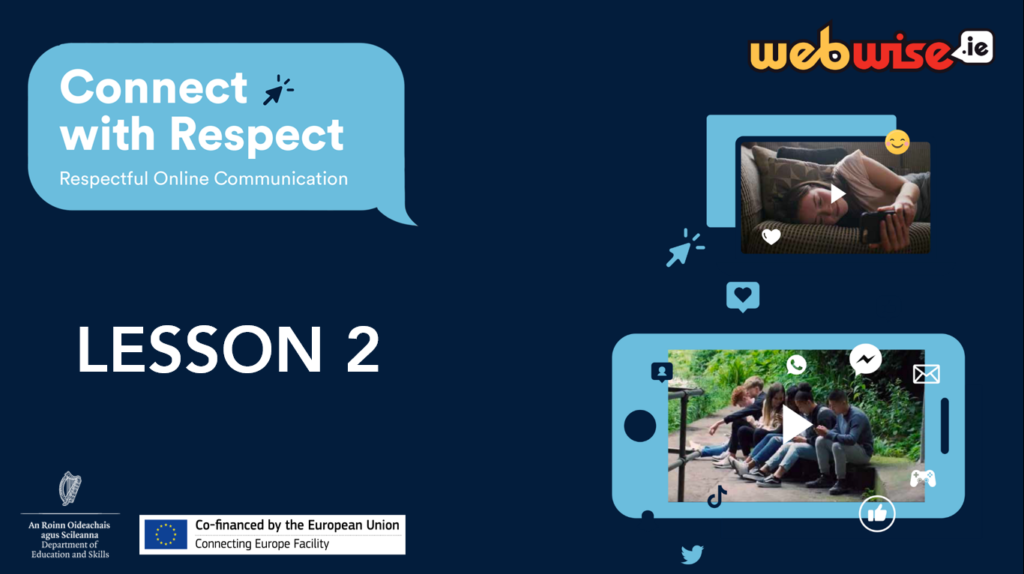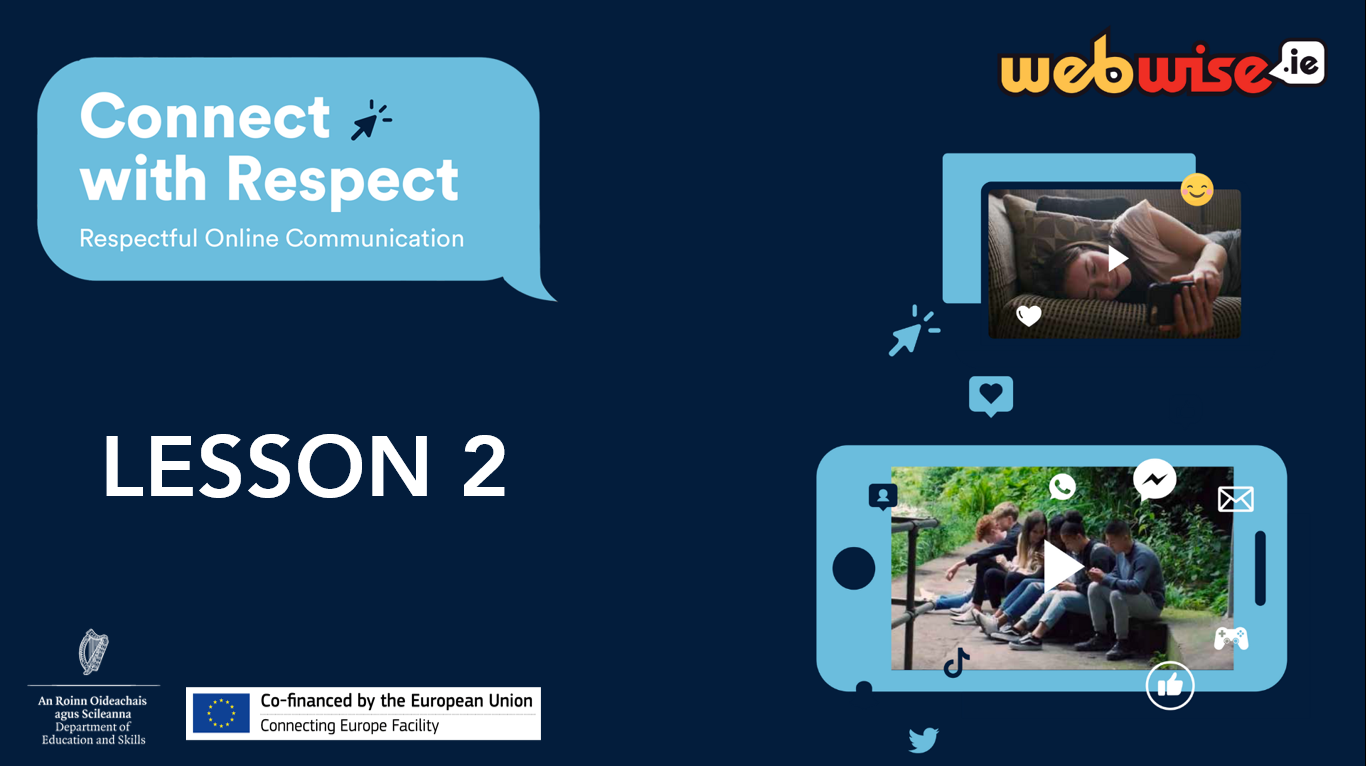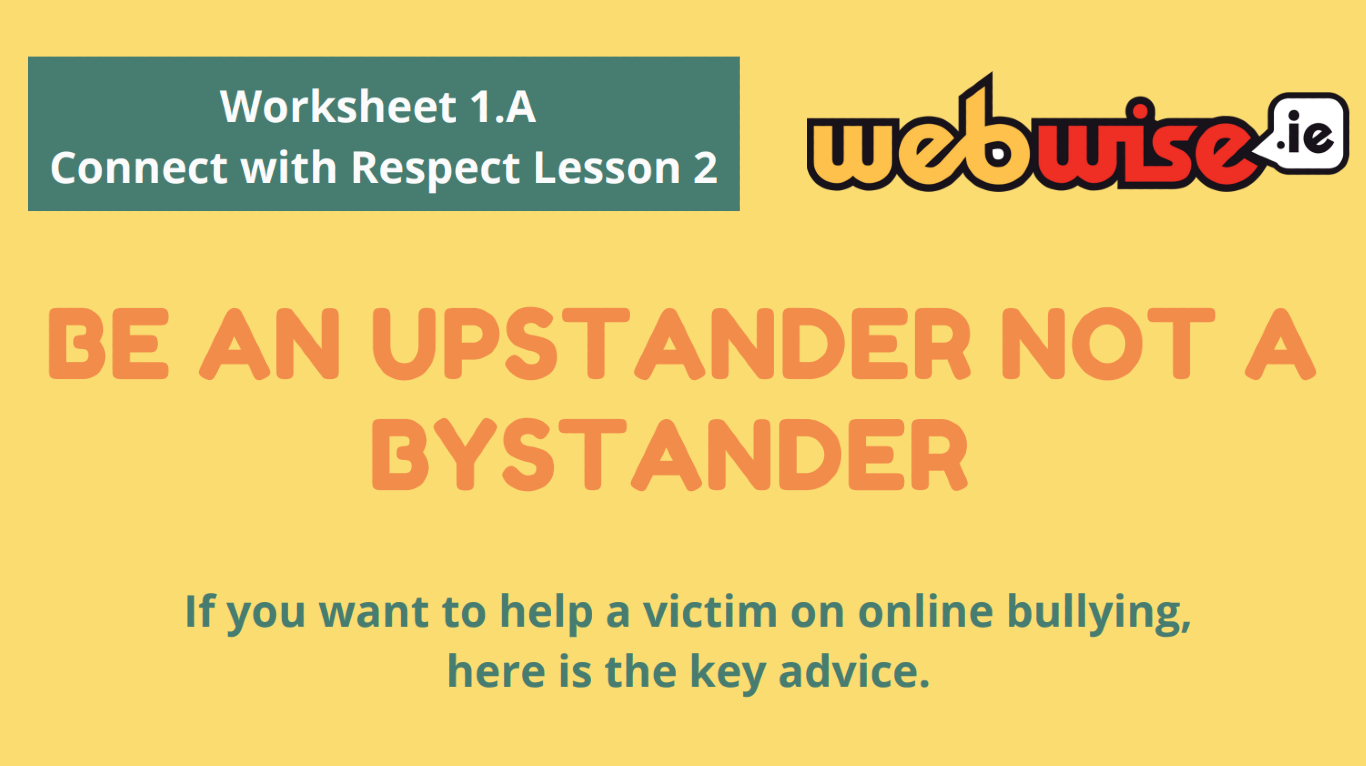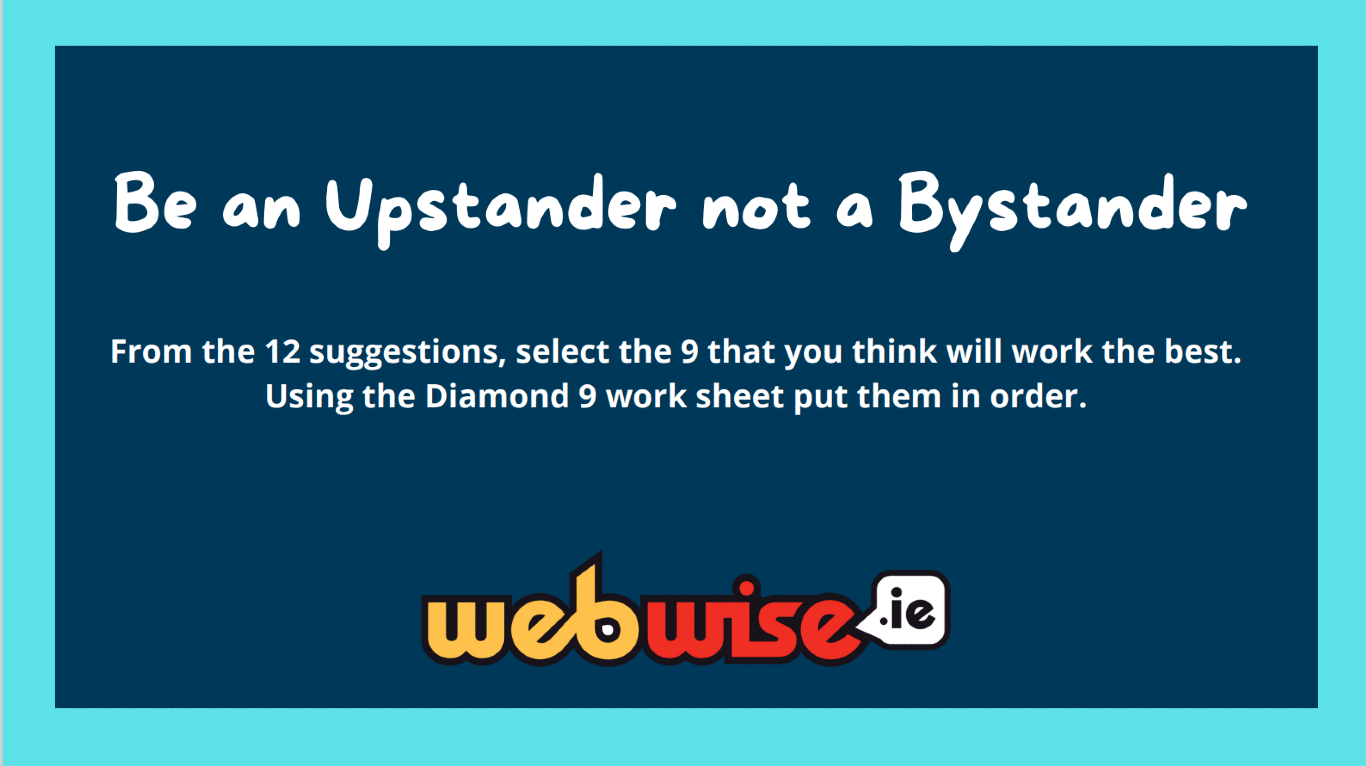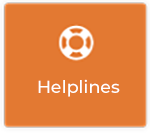Begin with a recap of the Connect with Respect Garda Schools Lesson and the key points:
- What is cyberbullying?
- What constitutes cyberbullying?
- How can we respond?
- Where can we get help?
Slide 4: Introduce the concept of being an upstander and being a bystander when online.
Ask students if they are aware of the term bystander and upstander.
Upstander OR Bystander:
Bystander: Bystanders are people who witness bullying but are not victims or perpetrators of bullying. The bystander effect means that often the more people who see something happen the less likely each individual is to do something about it.
Upstander: Someone who not only recognises when something is wrong, but as a result, stands up for his/her beliefs by taking action. An upstander will help/support whomever is being hurt, or will speak up to correct the situation/make it right.
Slide 5: Students should then consider the following questions:
What might prevent people from intervening in bullying situations?
Suggested answers:
People might be prevented from intervening because they fear being bullied next.
They think they don’t know the full story and so avoid getting involved.
They are threatened when they try to help out.
They don’t know what to do.
They don’t recognise the bullying behaviour.
They want to stay ‘in’ with the popular crowd.
They don’t want to take sides.
They are involved in bullying and fear they’d get in trouble if they intervened.
How can bystanders get help without exposing themselves?
Suggested answers:
Bystanders can help by reporting cyber bullying online. This is usually an anonymous process. Bystanders can also help by telling a student mentor or responsible adult about the bullying incident. The bystander can stress that they would like to remain anonymous to prevent the bullies from targeting them next. The bystander can help improve the situation by reaching out and supporting the person who is being bullied. Speaking up in a calm supportive way but not retaliating online will let the bullies know that their behaviour is being noted and that it is not condoned. Privately supporting the person who is bullied might give this person the courage to seek help.
How do people who bully benefit when someone acts as a positive bystander?
Suggested answers:
These people benefit when someone acts as a positive bystander as bystander interventions help bring problems to the surface and lead to positive resolutions. Oftentimes the reason why people bully is that they are experiencing difficulties themselves. When a bystander intervenes, this can result in the person who bullies receiving the support they need. Bystander interventions also help bring an end to conflict that might actually have been distressing the person who bullies.



